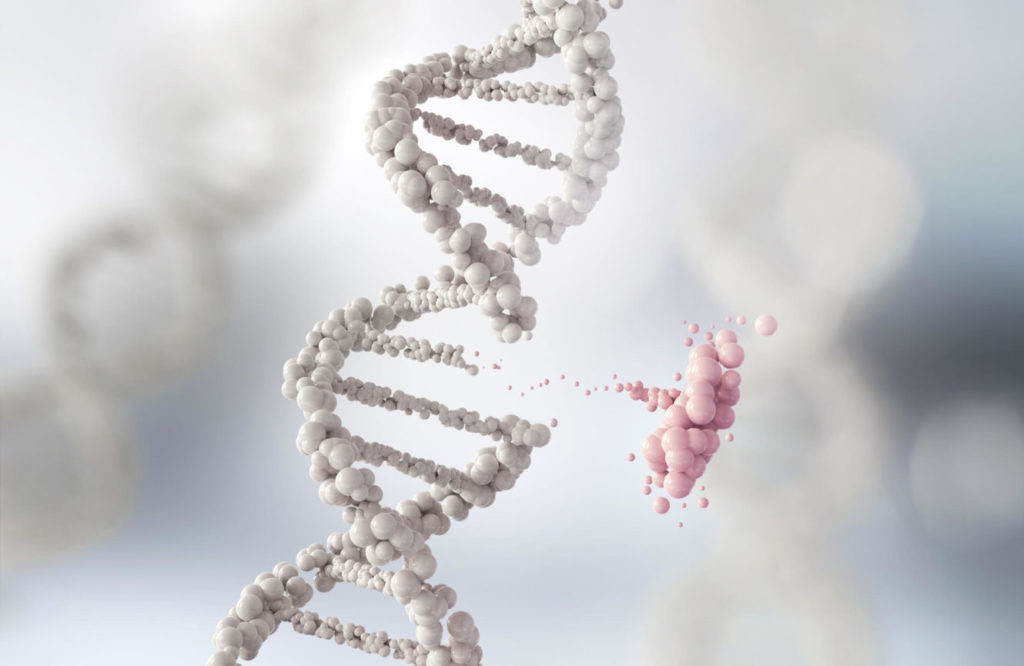No two people are alike, due to the subtly different ways our genomes are expressed. But sometimes these biological differences lead to genetic mutations that are extremely rare, and sometimes debilitating. Historically, many people suffering from these mutations were labelled monsters or freaks — but today, we know they are simply part of the broad spectrum of genetic variations in our species. Here are 10 of the most unusual genetic mutations we’ve identified in humans.

1. Progeria
This genetic disorder is as rare as it is severe. The classic form of the disease, called Hutchinson-Gilford Progeria, causes accelerated aging.
Most children who have progeria essentially die of age-related diseases around the age of 13, but some can live into their 20s. Death is typically caused by a heart attack or stroke. It affects as few as one per eight million live births.
The disease is caused by a mutation in the LMNA gene, a protein that provides support to the cell nucleus. Other symptoms of progeria include rigid (sclerotic) skin, full body baldness (alopecia), bone abnormalities, growth impairment, and a characteristic “sculptured” nasal tip.
Progeria is of great interest to gerontologists who hope connect genetic factors to the aging process.
2. Hypertrichosis
Hypertrichosis is also called “werewolf syndrome” or Ambras syndrome, and it affects as few as one in a billion people; and in fact, only 50 cases have been documented since the Middle Ages.
People with hypertrichosis have excessive hair on the shoulders, face, and ears. Studies have implicated it to a rearrangement of chromosome 8. It happens due to a disruption of the “crosstalk” between the epidermis and the dermis as hair follicles form in the 3-month foetus at the eyebrows and down to the toes. Normally, signals from the dermis send the messages to form follicles. As a follicle forms, it sends signals to prevent the area around it from also becoming a follicle, which results in the equal spacing of our five million or so follicles. Most of our body parts ignore the messages to form follicles, which explains why most of us are relatively hairless.

3. Severe Combined Immunodeficiency Disorder (SCID)
Also known as the Boy in the Bubble Disease, it’s a disorder in which individuals are born without an effective immune system.
The disease was made famous by the 1976 film, The Boy in the Plastic Bubble, a story inspired by the lives of David Vetter and Ted deVita. In the movie, a boy is forced to live in plastic isolation for fear of exposure to unfiltered air and the introduction of life-threatening pathogens. In real life, Vetter lived in this condition for 13 years, but he died in 1984 following an unsuccessful bone marrow transplant (a failed attempt to help him fight infections).
And indeed, the disorder is caused by a number of genes, including those that cause defects in both T and B cell responses — which has a downstream negative effect on the production of lymphocytes (a type of white blood cell). SCID is also thought to arise due to the lack of adenosine deaminase (ADA). Interestingly, SCID was the first human illness treated by human gene therapy in 1990, and is increasingly being used to treat children.
4. Ectrodactyly
Formerly known as “lobster claw hand,” individuals with this disorder have a cleft where the middle finger or toe should be. These split-hand/split-foot malformations are rare limb deformities which can manifest in any number of ways, including cases including only the thumb and one finger (typically the little finger or little finger). It’s also associated with hearing loss. Genetically speaking, it’s caused by several factors, including deletions, translocations, and inversions in chromosome 7.

5. Proteus Syndrome
In conjunction with neurofibromatosis type I, this is the disease that likely afflicted Joseph Merrick, the so-called Elephant Man. It’s a condition in which bones, skin, and other tissues are overgrown. Individuals typically have organs and tissues that grow out of proportion with the rest of their body, and because the overgrowth varies and exhibits no apparent order, it can result in strange and imbalanced features. Signs of the disorder don’t usually appear until about 6 to 18 months after birth. The severity of Proteus syndrome varies from individual to individual, and it occurs in less than one in one million people. And in fact, only a few hundred documented cases have ever been reported.
The disorder results from a mutation in the AKT1 gene (which regulates cell growth), causing mosaicism; as cells grow and divide, some cells exhibit the mutation while others do not. The resulting mixture of normal and abnormal cells is what causes the overgrowth.
Have you heard of other genetic abnormalities that we haven’t covered in this article? Share them in the comments below and we revisit this in a part 2.


